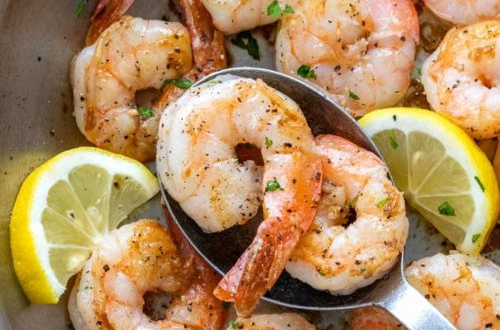Cooking shrimp may seem daunting to many, but with the right knowledge and techniques, it can be a delightful and rewarding experience. Shrimp, with its sweet, delicate flavor and firm texture, is a versatile seafood that can be the star of many dishes. Whether you’re aiming to impress guests at a dinner party or simply want to enjoy a delicious meal at home, knowing how to cook shrimp is an essential culinary skill. In this comprehensive guide, we will explore various methods to cook shrimp, along with tips and tricks to ensure your shrimp is perfectly cooked every time.
Understanding Shrimp: The Basics
Before diving into the cooking process, it’s important to understand the basics of shrimp. Shrimp come in various sizes and types, and they can be bought fresh or frozen. The size of the shrimp is usually indicated by a number, which represents the average number of shrimp per pound. For example, “16/20” means there are 16 to 20 shrimp per pound. When it comes to types, some common varieties include white, brown, pink, and tiger shrimp, each with its own unique flavor and texture.
When purchasing shrimp, look for ones that smell fresh and clean, almost like seawater. If buying frozen, ensure the package is free from ice crystals or signs of freezer burn. It’s also crucial to decide whether to buy shrimp with shells on or off, as the shells can add flavor to certain dishes but may not be desirable in others.
Preparing Shrimp for Cooking
Proper preparation is key to cooking shrimp successfully. If you’re starting with frozen shrimp, thaw them gently in the refrigerator overnight or under cold running water for about 15 minutes. Once thawed, it’s time to clean and devein the shrimp, a process that involves removing the shell and the dark vein running along the shrimp’s back. This vein is actually the shrimp’s digestive tract, and while it’s edible, removing it is generally recommended for both aesthetic reasons and to ensure the best taste.
After deveining, rinse the shrimp under cold water and pat them dry with paper towels. This step is crucial because excess moisture can prevent the shrimp from searing or browning properly during cooking.
Cooking Methods: Exploring the Possibilities
Shrimp can be cooked in a myriad of ways, each bringing out its natural flavors and textures. Here are some popular methods:
1. Sautéing
Sautéing is a quick and easy method that involves cooking shrimp in a hot pan with a little bit of oil. It’s perfect for when you’re short on time but still want a delicious meal. To sauté shrimp, heat oil in a pan over medium-high heat, add the shrimp in a single layer, and cook for about 1-2 minutes on each side, or until they turn pink and opaque.
2. Grilling
Grilling imparts a smoky flavor to shrimp, making it ideal for barbecues and outdoor gatherings. To grill shrimp, preheat your grill to medium-high heat, thread the shrimp onto skewers, and grill for 2-3 minutes on each side. Brushing the shrimp with a marinade or sauce while grilling can add an extra layer of flavor.
3. Boiling
Boiling is a simple method that’s great for shrimp cocktail or salads. To boil shrimp, bring a large pot of salted water to a boil, add the shrimp, and cook for 2-3 minutes, or until they’re pink and opaque. Immediately transfer the shrimp to an ice bath to stop the cooking process and retain their tender texture.
4. Baking
Baking shrimp in the oven is a hands-off method that allows for even cooking. Preheat your oven to 400°F (200°C), arrange the shrimp in a single layer on a baking sheet, and bake for 6-8 minutes. This method is particularly good for large batches or when you want to include shrimp as part of a larger dish, like a casserole.
Flavor Pairings and Seasoning
Shrimp’s mild flavor makes it a perfect canvas for a wide range of seasonings and sauces. Garlic, lemon, butter, and herbs like parsley and cilantro are classic pairings that enhance the natural sweetness of the shrimp. For a more adventurous take, try marinating your shrimp in a mixture of olive oil, chili flakes, and lime juice for a spicy kick, or coat them in a blend of spices like paprika, cumin, and coriander for a Middle Eastern twist.
When seasoning shrimp, it’s important to do so just before cooking, as salt can draw out moisture and potentially make the shrimp tough if left sitting too long.
Serving Suggestions
Once cooked, shrimp can be served in a variety of ways. It can be the main protein in pasta dishes, salads, and tacos, or served alongside steamed vegetables and rice for a balanced meal. Shrimp also makes an excellent appetizer, whether it’s in the form of a classic shrimp cocktail or skewered and grilled for easy sharing.
Conclusion
Cooking shrimp doesn’t have to be intimidating. By understanding the basics, preparing them properly, choosing the right cooking method, and experimenting with different flavor pairings, you can create mouthwatering dishes that showcase the delicate sweetness and succulent texture of shrimp. Whether you’re a novice cook or an experienced chef, mastering how to cook shrimp is a valuable skill that will add variety and elegance to your culinary repertoire.
FAQs on How to Cook Shrimp
1. How do I know when shrimp is fully cooked?
Shrimp is fully cooked when it turns pink and opaque, and the flesh becomes slightly firm to the touch. Overcooked shrimp can become tough and rubbery, so it’s important to watch it closely during cooking.
2. Can I cook shrimp from frozen?
Yes, you can cook shrimp directly from frozen in many cases, especially when boiling or grilling. However, for the best texture and flavor, it’s recommended to thaw them first, either in the refrigerator overnight or under cold running water for about 15 minutes.
3. What’s the best way to thaw frozen shrimp?
The safest way to thaw frozen shrimp is in the refrigerator overnight. For a quicker method, place the shrimp in a sealed bag and submerge them in cold water, changing the water every 30 minutes until they’re thawed.
 Inspirescroll
Inspirescroll




